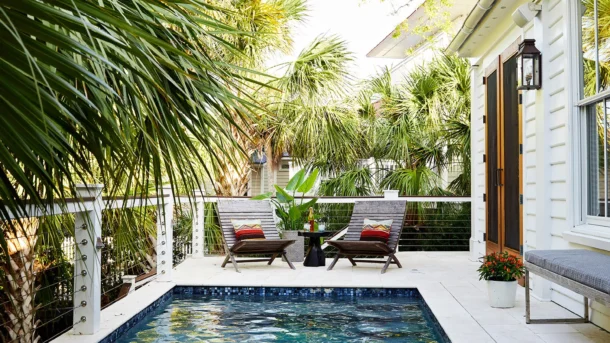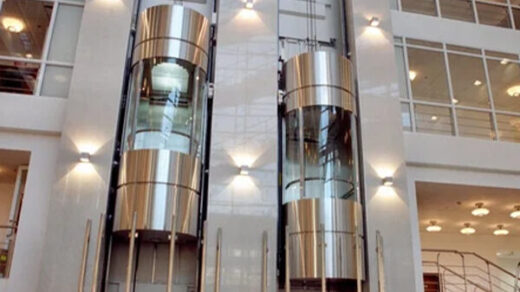6 types of pools – above ground, in-ground, infinity edge, pool spas and hot tubs. Find the best pool for your backyard and budget.
A pool is the ultimate home upgrade. Different types of pools can serve as a relaxing retreat, a family fun zone, or a training area for serious swimmers. The size and style determine the cost, construction process, and how you and your family will use it.
When planning for a pool, consider all your options for above-ground, in-ground, and specialty pools before you make the investment. Each option has pros, cons, and special considerations that should factor into your decision.
Important Pool Regulations to Know
Before planning your pool, research local regulations carefully. Many regions restrict certain pool types, so verify which designs your municipality permits. Contact your local building department early in the process to understand all requirements. Always implement safety measures throughout construction to ensure compliance with all guidelines.
:strip_icc():format(webp)/home-pool-deck-ETQanX7FqE9Bc4s4W5s13r-4d7f47bf12e34d6aa5291c7ef93a7641.jpg)
1. Above-Ground Pools: Affordable & Versatile Options
Homeowners typically choose above-ground pools as the most budget-friendly option. These pools sit directly on your yard’s surface, often surrounded by a deck or patio. Manufacturers construct most models using durable aluminum, resin, or steel sidings with vinyl liners, and many offer attractive patterned walls.
You can easily assemble and dismantle these pools yourself as a DIY project. Many retailers will deliver and install them for you as well. Their sectional design makes them perfect for backyards with tight access, as workers can carry the pieces directly to your installation site.
Advantages of Above-Ground Pools
Above-ground pools are generally less expensive and easier to build than other types of pools. Here are some of the main advantages:
- Above-ground versions are the most affordable type of pool.
- Some options are temporary structures, so you can take them if you move.
- Available in several shapes and sizes, they’re suitable for small yards.
- Assembling and disassembling an above-ground pool is relatively easy.
Disadvantages of Above-Ground Pools
Consider these downsides before choosing an above-ground pool:
- Although they come in various shapes and sizes, you’re typically limited to the manufacturers’ designs.
- Above-ground pools can be challenging to disguise in a landscape, although carefully planned patios and decks can help blend them into your yard.
- Their lifespan is not as long as in-ground pools. Vinyl liners typically need replacing every five years.
Also popular are the most basic above-ground pools, easily filled with a garden hose and stored away when not in use. Because they require no filtration equipment, they must be regularly drained, cleaned, and refilled to provide a clean swimming environment.
How to Make a Stock Tank Pool for Budget-Friendly Backyard Fun
2. In-Ground Pools: Permanent Backyard Features
In-ground pools create permanent aquatic structures that integrate seamlessly into your landscape. Homeowners can choose from three main varieties: durable concrete pools, low-maintenance fiberglass pools, and budget-friendly vinyl-liner pools. You’ll work directly with your contractor to select the best construction type for your needs. Most buyers prioritize materials that offer both strength and flexibility for long-term enjoyment.
Fiberglass Pools
These types of pools are usually made by the manufacturer and delivered in one piece. Fiberglass pools are typically more flexible than concrete pools, making them a good choice in earthquake-prone areas. Fiberglass panel pools, constructed on-site, are another option that allows more design flexibility.
Concrete Pools
Often the most costly types of pools to build, concrete pools are poured on-site, allowing you to custom-design virtually any shape or size. Finishes include plaster, paint, and specialty coating materials, such as Pebble Tec, and are available in various colors.
Vinyl-Liner Pools
These in-ground pools are built with panel walls that are fastened together and sit on a concrete foundation. A custom-made vinyl liner then covers the entire pool.
Consider adding a pool heater or solar cover to keep the water warm and extend your swimming season.
Advantages of In-Ground Pools
In-ground pools offer endless opportunities to customize the size, shape, and style to create your dream pool. These are the main advantages:
- Most in-ground pools can be designed to fit any shape or size yard and accommodate your specific needs, such as depth for diving or fitness swimming.
- They can be designed easily to fit into the landscape.
- There are several accessories and features available, such as diving boards, slides, water games, water fountains, and specialty lighting.
Disadvantages of In-Ground Pools
This type of pool also comes with a few significant downsides:
- In-ground pools are typically more costly to build.
- The construction duration can be lengthy.
- Because the water surface is near ground level, in-ground pools can pose a greater safety risk for young kids or pets.
Plunge Pools Are the Popular Upgrade That Will Keep You Cool All Summer
3. Infinity Pools: The Ultimate Luxury Feature
Builders typically custom-design infinity pools to highlight breathtaking views. These stunning pools feature one or more vanishing-edge walls positioned just below the water level. As water flows over these edges, it creates the magical illusion of boundless water. Homeowners most often install them on properties with steep drop-offs to showcase dramatic landscapes like mountains, lakes, or oceans. However, these specialized designs require complex engineering, making them among the most expensive pools to construct and maintain.
4. Lap Pools: The Fitness-Focused Swimming Solution
If fitness motivates your pool ownership, consider lap pools specifically designed for swimmers. These in-ground pools feature a long, narrow rectangular shape that makes them a smart investment. Their compact design requires minimal space, perfect for small yards. Most lap pools provide at least 40 feet of unobstructed swimming space to minimize turns. A single swimmer needs only 8 feet of width. Builders construct these pools using the same methods as other in-ground pools.
5. Swim Spas: The Ultimate Dual-Purpose Fitness Solution
Swim spas combine the best features of pools and spas to create an ideal fitness setup. Their powerful water jets let swimmers exercise against a continuous current without needing a large pool. These compact units fit perfectly in small yards, with some models measuring just 12 feet long. Since users stay in place while swimming, the spa requires minimal space. Homeowners can heat the water to enjoy both invigorating workouts and relaxing soaks in the same unit.
6. Hot Tubs & Spas: Compact Relaxation Solutions
Hot tubs and spas offer heated, therapeutic soaking in compact packages. Manufacturers typically design portable above-ground units as hot tubs, while builders usually integrate home spas as permanent in-ground features alongside pools. Many brands now produce convenient inflatable hot tubs as well. Their smaller size means owners spend less on installation and maintenance compared to full-size pools. However, the limited space does restrict how many people can enjoy them at once.
The 6 Best Hot Tubs, According to Testing
Ways to Upgrade Your Backyard
Lighting Magic
Brighten your outdoor space with DIY lighting solutions. Enjoy your backyard day or night with these creative ideas.
Firepit Gatherings
Transform a simple firepit into the ultimate hangout spot. Discover 15 cozy designs for unforgettable outdoor entertaining.
Lawn-Free Landscaping
Ditch the grass! Explore 16 no-grass backyard ideas featuring plantings, seating areas, and garden beds for a stunning outdoor retreat.
Year-Round Gazebos
Stay shaded and sheltered in any season. Check out 21 gazebo designs that blend comfort with nature.
Kids’ Play Paradise
Spark imagination with creative playhouses. These kid-friendly shed ideas turn your backyard into a wonderland.
Frequently Asked Questions
(1)How much does it cost to build a pool in your backyard?
The cost to build a pool can vary greatly depending on several factors. First, consider the landscape of your backyard and your desired aesthetic. Additionally, the cost of labor and materials in your area plays a significant role. Most importantly, the type of pool you choose dramatically affects the price. As a result, you can generally expect to spend anywhere from $5,000 to $100,000 or more when installing a pool.
(2)Do you need a permit to build a pool?
In most cases, yes – you will need a residential building permit before beginning pool construction. However, requirements vary significantly depending on your location. For example, regulations differ from state to state and even between towns. Therefore, it’s always wise to check with your local government before starting any project. Furthermore, some areas may require additional safety inspections during the building process.
(3)How do you know if a pool is worth it for your family?
Like many home improvement projects, building a pool is ultimately a personal decision. To determine if it’s worthwhile, first consider how often your family will actually use it. Next, evaluate whether it will increase your property value enough to justify the cost. Additionally, factor in ongoing maintenance expenses. Finally, remember that while pools offer recreation and relaxation, they require significant investment – so weigh all these aspects carefully before committing.



